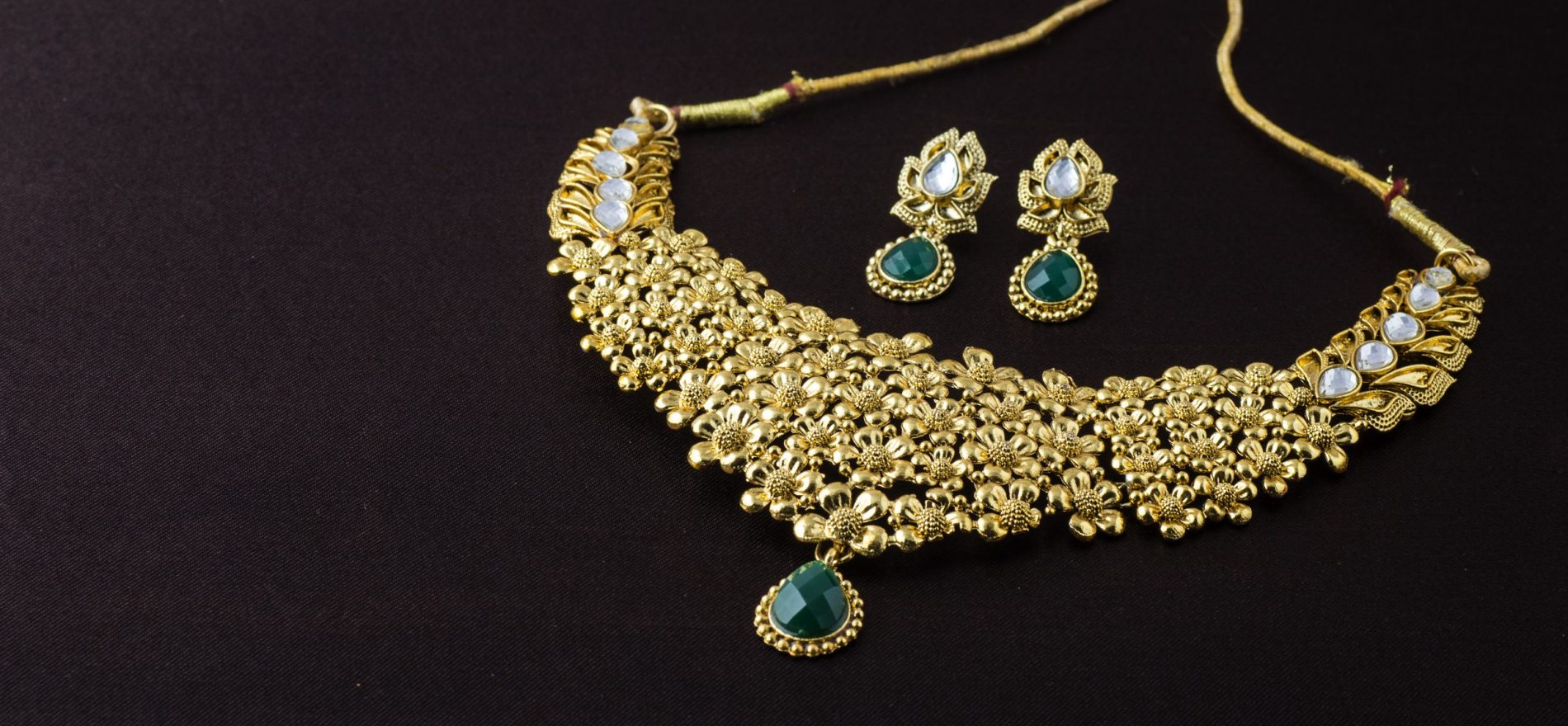If you’re captivated by the allure of a career in jewelry design, there are definite steps you can embark upon to refine and cultivate the skills essential for this exhilarating profession. From mastering the art of sketching intricate designs to learning about the nuances of selecting precious gemstones, each facet of this creative journey plays a crucial role in shaping your path as a jewelry designer.
In this article, we’ll unravel the journey of a jewelry designer, explore their daily responsibilities, and offer insights into how you can forge your own remarkable path in this glittering realm of creativity.
Table of Content
What is a Jewelry Designer?
What Does a Jewelry Designer Do?
What Education Do You Need to Become a Jewelry Designer?
1. Earn an Associate or Bachelor’s Degree
2. Learn Jewelry Design Skills
4 Essential Steps to Become a Jewelry Designer
1. Gain Experience in the Industry
2. Create Your Portfolio
3. Consider Investing in Further Education
4. Grow Your Professional Network
Jewelry Designer Job Outlook
Jewelry Designer Salary Outlook
What Skills Do You Need to Become a Jewelry Designer?
Conclusion
FAQ
What is a Jewelry Designer?
A jewelry designer is a masterful creator who meticulously conceives and crafts intricate patterns for an array of exquisite accessories, ranging from rings and necklaces to bracelets and beyond. These artisans frequently bring forth several prototypes of their creations, subjecting each model to rigorous trials to ascertain aspects of durability, comfort, and style. The artistic endeavors of jewelry designers manifest within diverse settings, encompassing:
- Jewelry stores, particularly those dedicated to bespoke designs
- Design studios and creative workshops
- Manufacturing facilities where crafting takes a tangible form
- Jewelry repair shops, where expertise breathes new life into cherished pieces
What Does a Jewelry Designer Do?
The realm of a jewelry designer’s responsibilities is shaped by a combination of their workplace environment and the bespoke orders they undertake. For instance, a client might seek a creation akin to existing merchandise in the jeweler’s collection. In response, the designer might delve into prototypes of the prior item, employing them as a blueprint to meticulously fashion a fresh wax model, culminating in the realization of the customer’s desire.
While the precise tasks can be diverse, the gamut of responsibilities for jewelry designers may encompass:
- Sketching designs on paper or through digital software
- Scrutinizing and appraising the caliber of gemstones, including diamonds, rubies, and emeralds
- Analyzing wax models, discerning areas for enhancement
- Executing the casting of new pieces in metal, with wax models as guiding frameworks
- Crafting personalized designs tailored to a specific clientele
- Ensuring the metal is polished and refined for the wearer’s comfort
- Employing chemical treatments and polishing techniques to cleanse the jewelry pre-distribution
- Skillfully reshaping metal, embedding gemstones, and guaranteeing secure attachments
In smaller-scale jewelry establishments, designers might see the fruition of their creations, crafting the final pieces themselves. Conversely, in larger corporations, designers might transition into managerial roles, supervising the jewelry production process and ensuring the meticulous execution of designs.
What Education Do You Need to Become a Jewelry Designer?
While having a degree isn’t strictly required, many aspiring jewelry designers often take a traditional path in learning the tools of the trade. Here are a few steps to consider:
1. Earn an Associate or Bachelor’s Degree
Aspiring jewelry designers often earn an associate’s or bachelor’s degree in gemology, jewelry design, accessories design, or another relevant subject. Earning a formal degree can also help you:
- Connect with active professionals in the industry
- Learn how to use advanced software or equipment to create your designs
- Apply to a position with a well-known jewelry manufacturer, company, or design studio
- Gain skills to advance into a leadership role in a jewelry business
- Accrue the background knowledge you need to start your own jewelry business
- To ensure your degree is well-respected in the industry, consider choosing a vocational school, community college, or university accredited by a national organization.
2. Learn Jewelry Design Skills
For a career in jewelry design, having well-developed design skills is essential. You can prepare to design by taking online jewelry courses, attending workshops or enrolling in specific classes during your formal degree. You may consider taking courses focused on:
- Caring for metal
- Manipulating and reshaping metal
- Cutting and setting gems
- Assessing the value of jewelry or individual stones
- Carving wax
- Making molds
- Engraving metal
- Repairing clasps, hooks, and other fasteners
- Using graphic design programs, 3D printers, and other high-tech equipment
- Leatherworking
- Managing a business
- Marketing a product
- Using microscopes and other specialized lenses for gem work
- Welding and soldering
4 Essential Steps to Become a Jewelry Designer
To embark on a successful journey as a jewelry designer, follow these steps to acquire the education, experience, and connections necessary for this captivating profession:
1. Gain Experience in the Industry
Kickstart your journey by gaining practical experience in jewelry design through internships or entry-level positions. Depending on your training environment, you’ll learn valuable skills such as:
- Sales Techniques: Interacting with customers in a local jewelry store allows you to provide expert advice, assist in purchases, and expand your knowledge of materials and gemstones.
- Production Insight: Collaborating with manufacturers involves creating and assembling jewelry pieces. This hands-on experience can offer insights into specific aspects like gem setting, informing your future designs.
- Design Exposure: Working in a design studio entails testing prototypes, refining wax models, and perfecting details like sizing, engraving, and polishing.
- Metal Care Proficiency: A stint in a repair shop or custom jewelry store equips you with metal care skills, including cleaning metals, gemstone cutting, and repairing metal devices like clasps and watches.
- Administrative Skills: Large jewelry stores provide opportunities to handle inventory, respond to customer queries, and contribute to marketing efforts by creating informed jewelry descriptions.
2. Create Your Portfolio
As part of your job application process, employers often request a portfolio alongside your resume. Start building your portfolio during your education, internships, or early design roles. To showcase your growth, versatility, and craftsmanship, consider maintaining your portfolio throughout your career. Successful portfolios typically feature:
- Professionally lit photos against solid or dark backgrounds.
- A diverse range of designs that reflect your artistic breadth.
- Engaging descriptions that align with your personal brand or design style narrative.
- Thoughtfully curated selections that emphasize quality over quantity.
- Both virtual and physical presentations of your creations.
3. Consider Investing in Further Education
Jewelry designers often undertake specialized work that demands additional training. These areas include:
- Gemology: Learn to inspect and assess gem quality using specialized tools.
- Appraisal: Gain expertise in evaluating jewelry’s value using respected reference materials and price lists.
- Metalwork: If you intend to work with unconventional metals or materials, further training in metalwork ensures durable and comfortable designs. Explore workshops, online courses, or collaboration with industry connections.
4. Grow Your Professional Network
Networking is integral to jewelry design. Building connections enhances your design process, keeps you abreast of industry trends, and provides the motivation needed for career growth. Cultivate your network by:
- Maintaining positive relationships with professors and advisors who are industry professionals.
- Seeking introductions to professionals through teachers.
- Connecting with industry experts via email, social media, or professional platforms.
- Attending jewelry conferences, trade shows, fashion events, and networking gatherings.
- Exploring collaborations with designers sourcing jewelry for local stores.
Jewelry Designer Job Outlook
The job outlook for jewelry designers is filled with promise, driven by the ever-evolving landscape of fashion and consumer preferences. With a growing emphasis on individuality and unique pieces, the demand for skilled jewelry designers who can create personalized accessories is on the rise. The digital age has opened doors for designers to showcase their creations to a global audience through online platforms and e-commerce, expanding their reach and market potential.
In this competitive field, standing out requires a blend of creativity, craftsmanship, and a distinct brand identity. As consumers seek authenticity and handcrafted pieces, jewelry designers who can infuse their creations with a touch of artistry and uniqueness are poised for success. Collaborations with influencers, celebrities, and brands also contribute to the demand for innovative designs that cater to diverse tastes. Whether working for established brands, pursuing entrepreneurial ventures, or carving a niche in the artisanal market, jewelry designers who stay adaptable, stay informed about trends, and cultivate a strong portfolio can thrive in this dynamic industry.
Jewelry Designer Salary Outlook
In India, the salary outlook for jewelry designers can vary widely. Junior jewelry designers with entry-level experience can expect to earn around ₹3,00,000 to ₹5,00,000 per year. As designers gain more experience and showcase their skills through a strong portfolio, their earning potential can increase. Mid-level and senior jewelry designers, known for their unique designs and expertise, may earn between ₹6,00,000 to ₹10,00,000 or more annually. The jewelry industry’s diverse nature, from traditional to modern designs, offers opportunities for designers to align their work with market trends and earn competitive salaries. Entrepreneurs and those who establish successful brands can also enjoy higher financial rewards.
What Skills Do You Need to Become a Jewelry Designer?
Education and training equip jewelry designers with a specialized skill set essential for creating stylish, innovative, and high-quality designs. These skills encompass:
- Creativity: Jewelry designers employ creativity to conceive novel designs, experiment with unique combinations of materials and gems, and refine prototypes to ensure their final pieces are visually captivating.
- Attention to detail: Designers meticulously analyze customer preferences, fashion trends, and sales data to determine the ideal selection of gemstones, metals, and other materials for their creations. They also demonstrate attention to detail by streamlining designs for efficient production, selecting complementary materials, and predicting wear patterns to ensure longevity.
- Problem-solving: Creatively addressing challenges during the design process empowers designers to craft jewelry that meets customer demands while upholding superior quality standards. This innovative approach can lead to the introduction of industry trends and improvements to existing designs.
- Communication: Jewelry designers actively engage with their peers within the jewelry-making community. Effective communication facilitates successful collaboration with fellow designers, efficient management of production processes, and invaluable customer feedback.
- Technological literacy: Proficiency in specialized software enhances the efficiency, editability, and speed of the design process. Jewelry designers leverage technological tools like 3D printers, graphic design software, and word processors to optimize their creative workflow.
Conclusion
In conclusion, becoming a successful jewelry designer requires a blend of creativity, technical skills, and a keen understanding of market trends. By pursuing education, gaining practical experience, building a strong portfolio, and fostering a network within the industry, you can embark on a fulfilling journey in the realm of jewelry design. As consumer preferences evolve and the demand for personalized accessories grows, skilled designers who can adapt to changing trends and create unique pieces are poised for success. With the potential to earn competitive salaries and showcase their work on global platforms, jewelry designers have a vibrant future in this dynamic and artistic field.
FAQs
How to become a fine jewelry designer?
You need to start with learning the basics of jewelry design, gemstones, and various different materials if you want to be a good jewelry designer. Work towards creating samples and practice illustrations. Further, you can also take on courses to understand different software and styles, which will help you to build a solid portfolio to showcase.
Is jewelry design a good career?
Yes, jewelry design is a great career choice, as the industry is booming and growing year on year. There is always a search and demand for exceptional jewelry pieces in weddings, fashion, and premium markets. You can work with big shots of the industry if you have the right skills and an impactful portfolio.
How to become a freelance jewelry designer
You should build a strong portfolio that will showcase your best work with your best designs and actively promote your work online to become a freelance jewelry designer. You can partner with various different stores or even sell directly through online platforms. A certification will give you an edge over others, so pursuing a certification course is advised.
How long does it take to become a professional jewelry designer?
It usually takes anywhere from 6 months to 2 years to become a professional jewelry designer. This also depends on what course you choose to puruse and the effort you put in.
Can I become a jewelry designer without a degree?
Yes, you can surely become a jewelry designer without a degree. Many jewelry designers don’t have big degrees or have just completed short-term diploma courses like the AAFT Online provides. Importantly, what matters is your skills, the effort you put in, and the market understanding.
What tools and software do jewelry designers use?
Jewelry designers use tools from sketching kits to gem-setting instruments. For digital design, software like MatricGold, RhinoGold, and Adobe Illustrator for creating 3D models.
Does AAFT Online offer jewelry design courses?
Yes, AAFT Online does offer a Diploma in Jewelry Design which is a 1-year online program. This diploma teaches modern and traditional jewelry design methods.
























